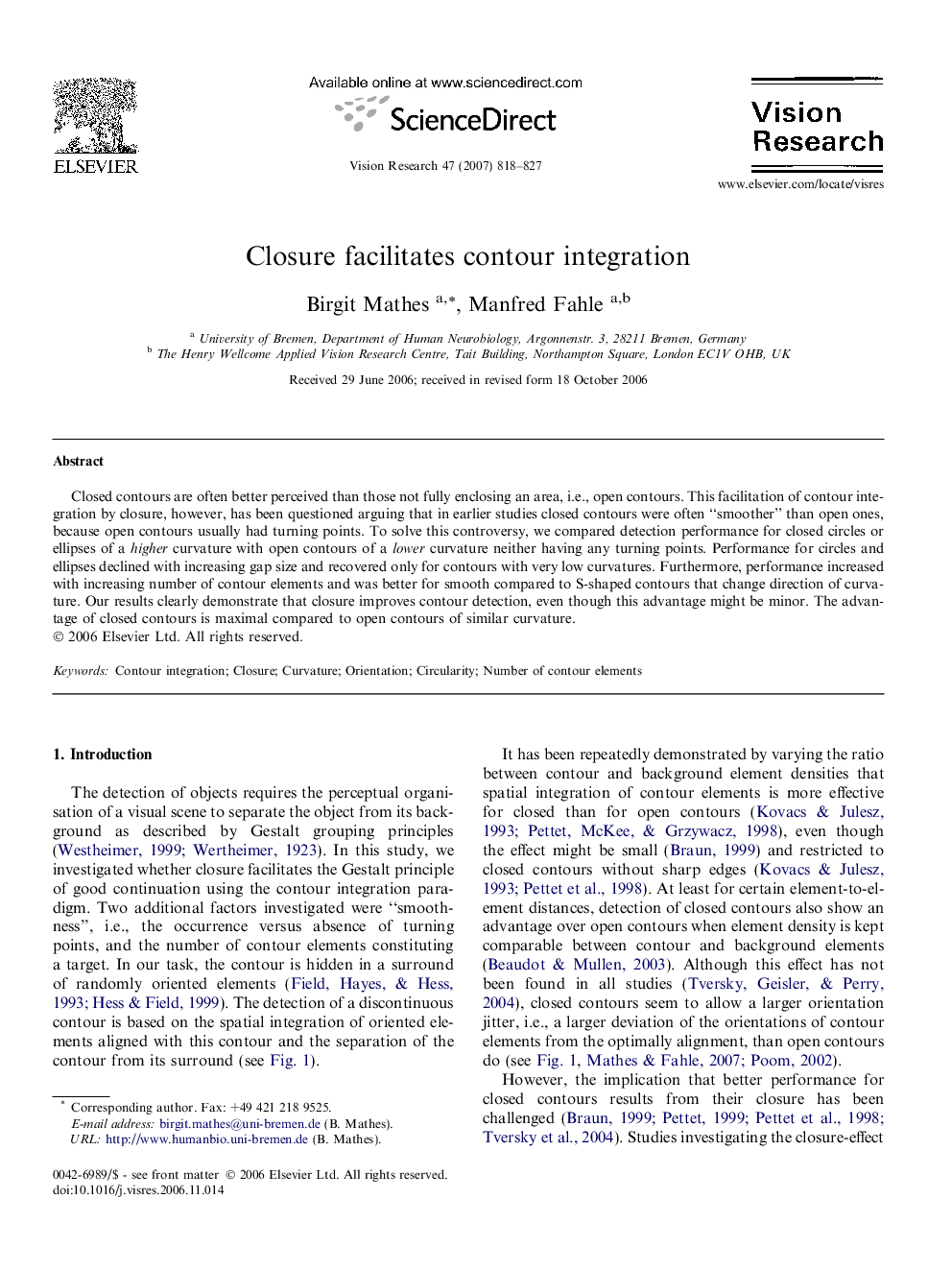| Article ID | Journal | Published Year | Pages | File Type |
|---|---|---|---|---|
| 4035854 | Vision Research | 2007 | 10 Pages |
Closed contours are often better perceived than those not fully enclosing an area, i.e., open contours. This facilitation of contour integration by closure, however, has been questioned arguing that in earlier studies closed contours were often “smoother” than open ones, because open contours usually had turning points. To solve this controversy, we compared detection performance for closed circles or ellipses of a higher curvature with open contours of a lower curvature neither having any turning points. Performance for circles and ellipses declined with increasing gap size and recovered only for contours with very low curvatures. Furthermore, performance increased with increasing number of contour elements and was better for smooth compared to S-shaped contours that change direction of curvature. Our results clearly demonstrate that closure improves contour detection, even though this advantage might be minor. The advantage of closed contours is maximal compared to open contours of similar curvature.
